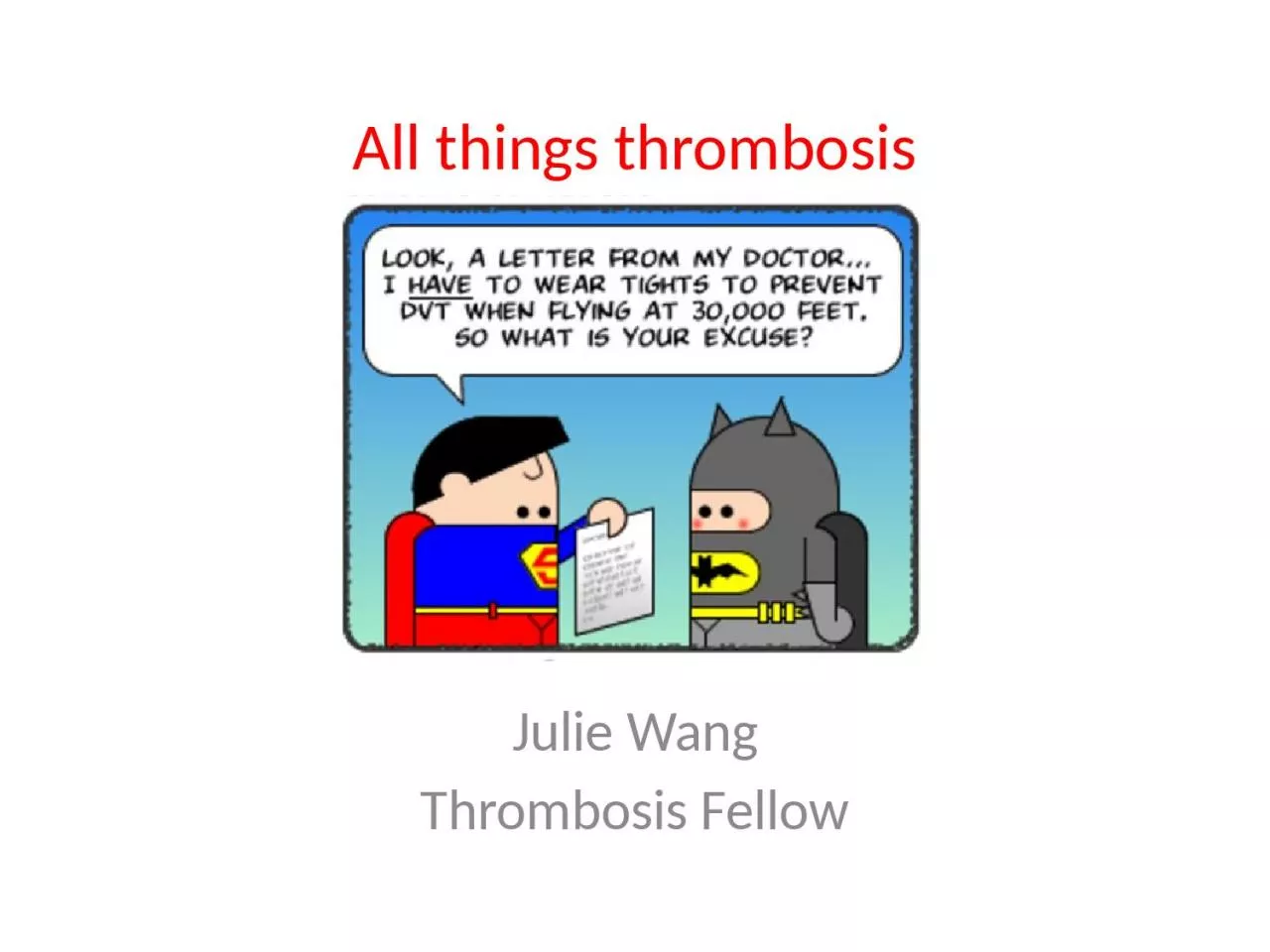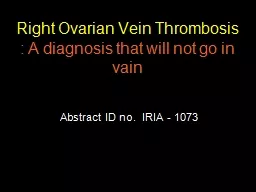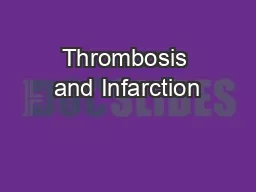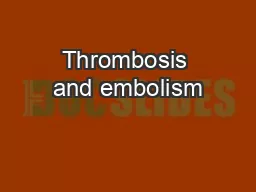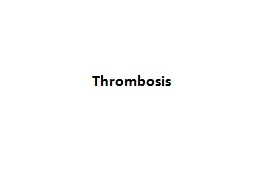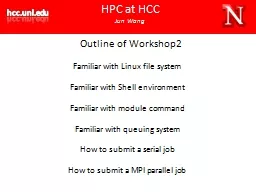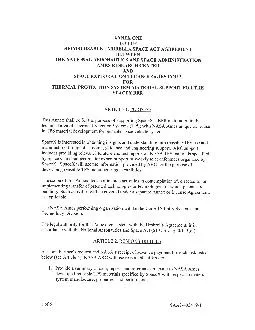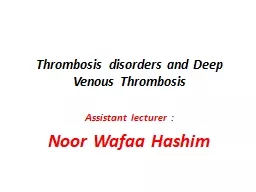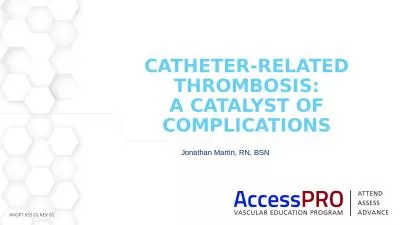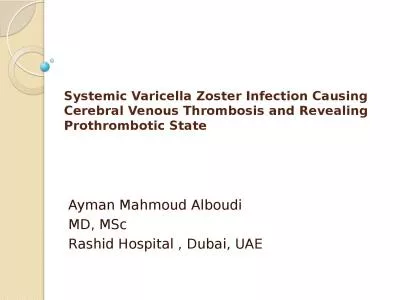PPT-All things thrombosis Julie Wang
Author : GirlNextDoor | Published Date : 2022-08-01
Thrombosis Fellow VTE is chronic disease Recurrence rate after initial VTE up to 246 after 5 years Clinical need to identify individuals at increased risk of recurrent
Presentation Embed Code
Download Presentation
Download Presentation The PPT/PDF document "All things thrombosis Julie Wang" is the property of its rightful owner. Permission is granted to download and print the materials on this website for personal, non-commercial use only, and to display it on your personal computer provided you do not modify the materials and that you retain all copyright notices contained in the materials. By downloading content from our website, you accept the terms of this agreement.
All things thrombosis Julie Wang: Transcript
Download Rules Of Document
"All things thrombosis Julie Wang"The content belongs to its owner. You may download and print it for personal use, without modification, and keep all copyright notices. By downloading, you agree to these terms.
Related Documents

